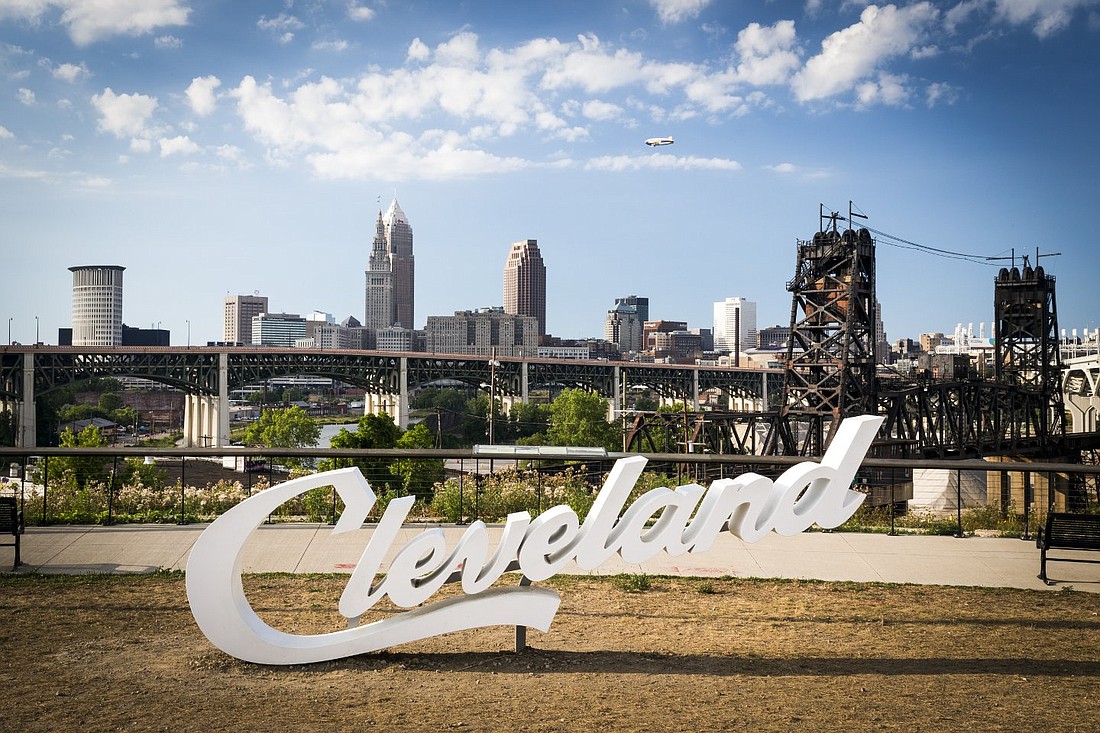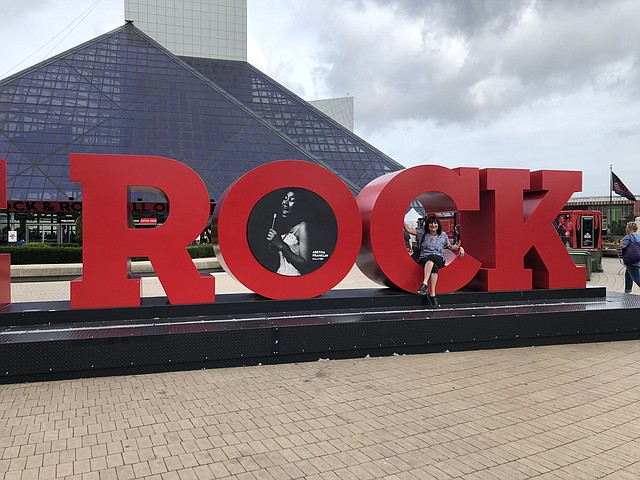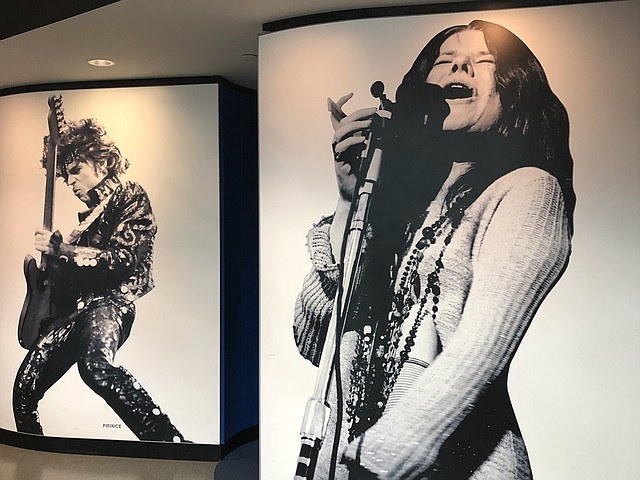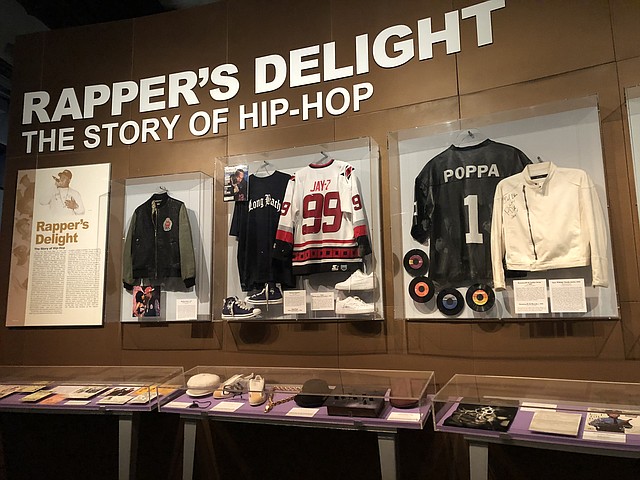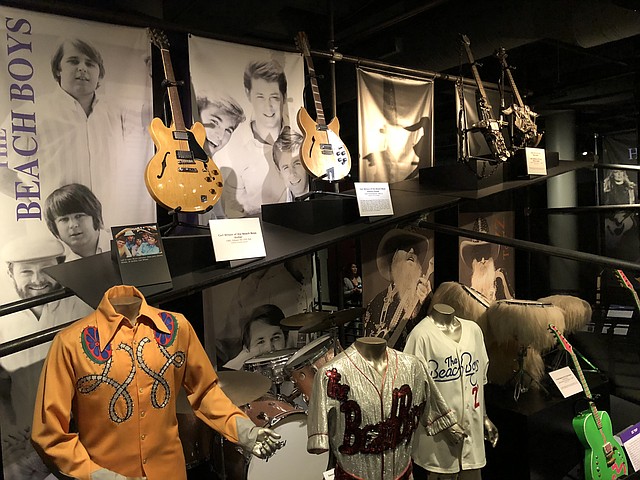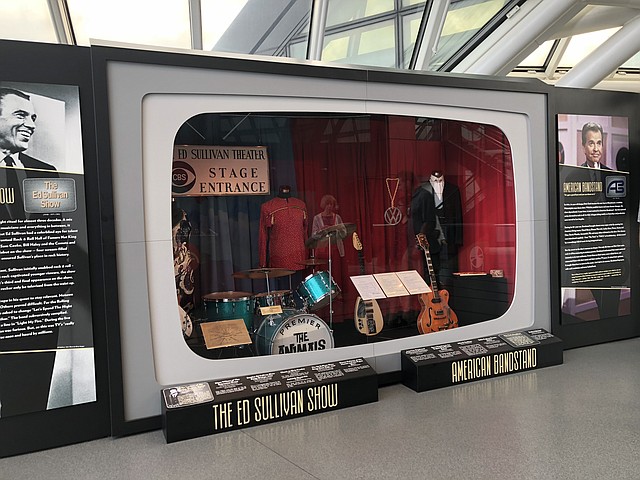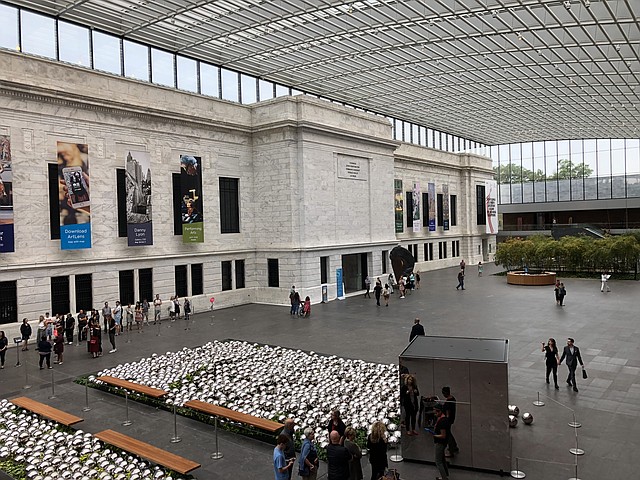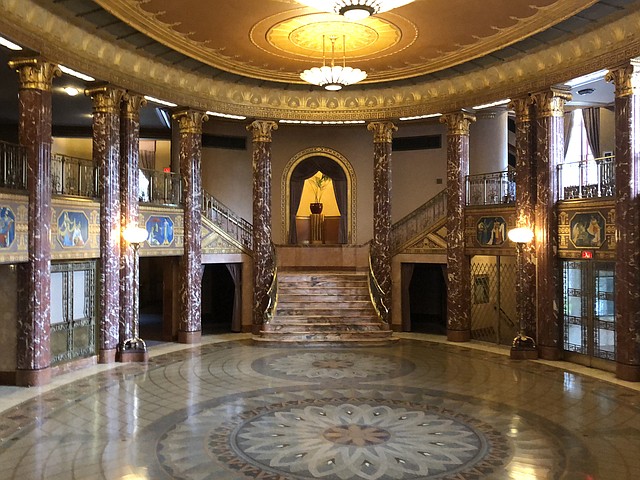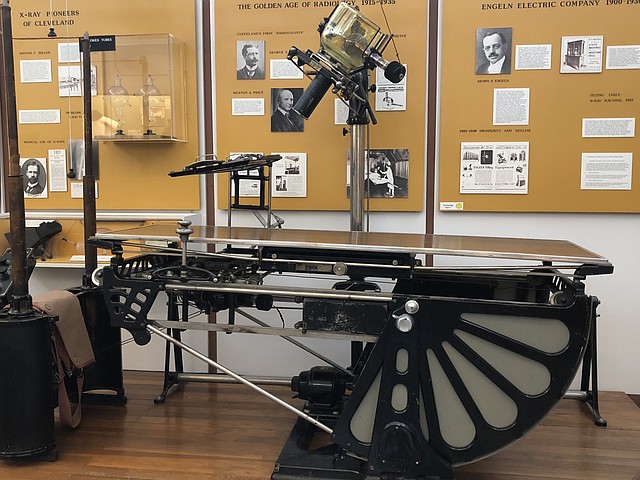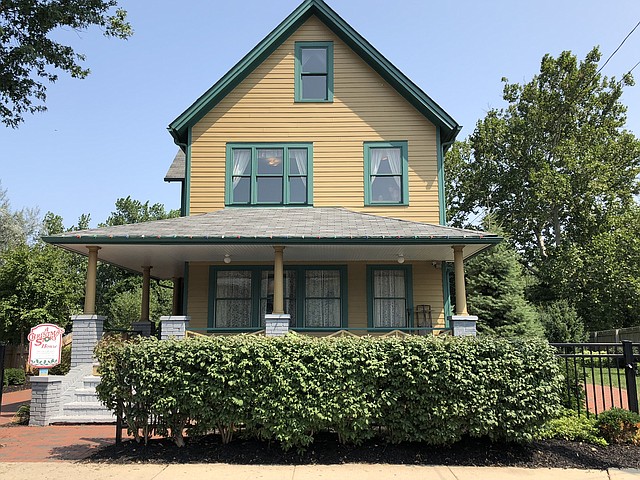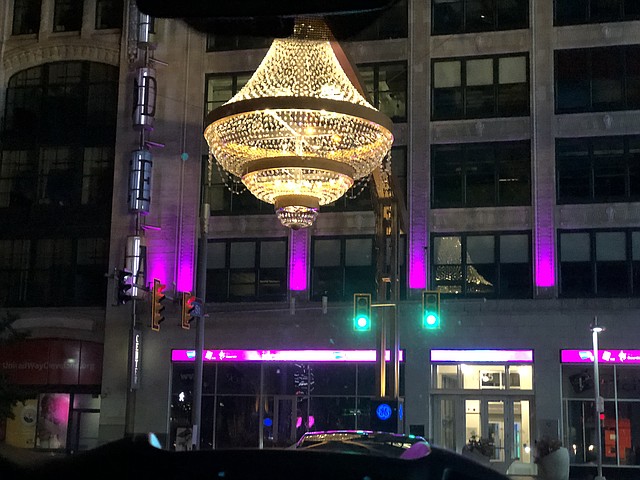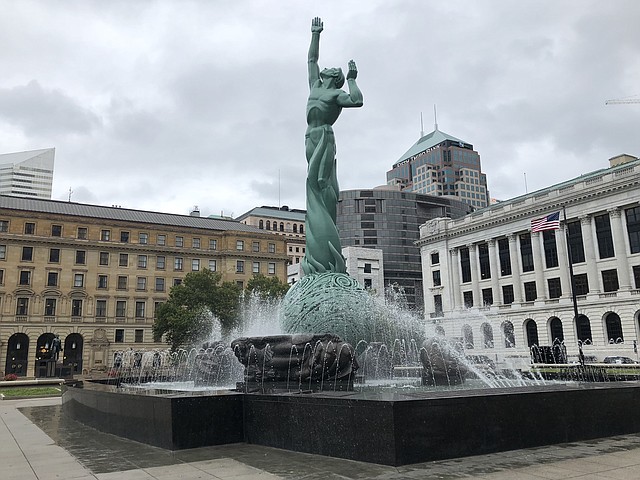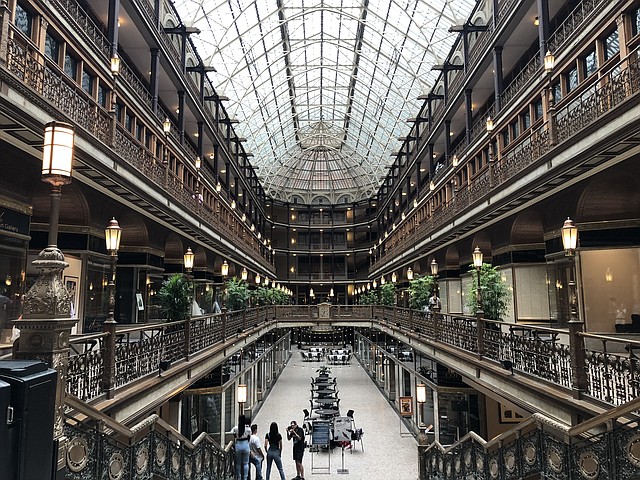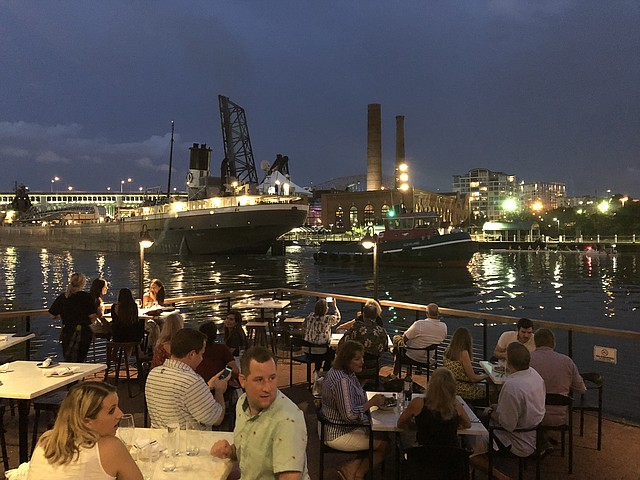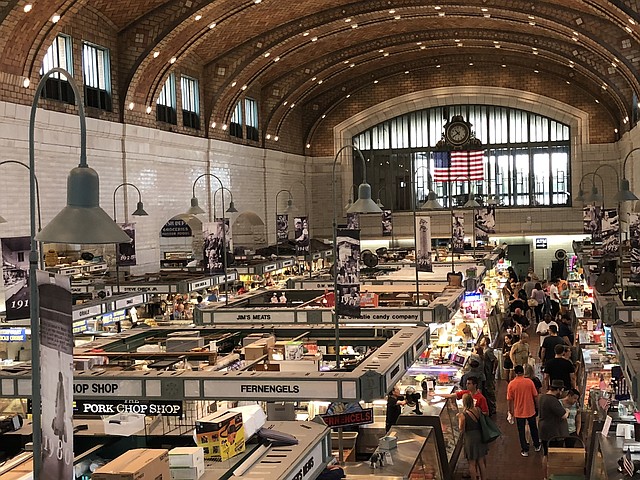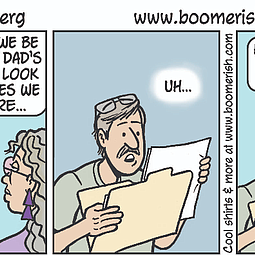Seriously, go to Cleveland!
October 1, 2018 at 6:00 a.m.
Music has always evoked strong memories in me. When I hear a familiar song from my past, I am suddenly transported back to a distinct time in my life, and the experience is vivid and visceral. This is especially true when it comes to the rock music of my youth and early adulthood. So, you can imagine all the emotions that began flooding over me as I stepped through the doors of the Rock & Roll Hall of Fame in Cleveland, Ohio.
A visit to the “Rock Hall,” as it’s commonly called by locals, is a pilgrimage for many people. They come from all over the country and around the globe to celebrate the music and pay homage to those who have played an important role in its creation and dissemination.
The nonprofit Rock & Roll Hall of Fame Foundation, which was established in 1983 by a group of leading figures in the music industry, was responsible for the development of the museum and Hall of Fame. After considering the bids of other American cities that had been seminal to rock history, the foundation located the museum in Cleveland, where local disc jockey Alan Freed had coined the term “rock and roll” in the 1950s.
The museum, which was designed by famed architect I.M. Pei, opened its doors in 1995. It’s a striking 150,000-square-foot, pyramid style building set on the shore of Lake Erie. Inside is the world’s largest collection of artifacts that span rock, pop, rap, jazz and R&B. If it has influenced rock and roll in any way – and let’s be honest, very few musical styles haven’t – it’s represented. Artifacts include instruments used by famous musicians, stage clothing and props, drafts of song lyrics, original album art, posters and photos. Exhibits, many of which are interactive and multi-sensory, examine rock music in depth, from its origins and influencers, to its impact on society, culture and political history. And through it all, the sound of music is omnipresent. Plan to spend several hours exploring the place, as there are multiple levels of exhibits.
A highlight for many is “The Legends of Rock and Roll,” a walk down memory lane, featuring the Beatles, Stones, Doors, Jimi Hendrix, the Who and more. In other galleries, you’ll hear about the protests against rock and roll, flashback to the momentous “Summer of Love” in all its psychedelic glory and learn about the artists who are the roots to the music, reminding us that without such individuals as Mahalia Jackson, Hank Williams and Jimmie Rodgers, the music we celebrate today would have been inconceivable. The radio personalities who delivered the songs are also given their due, as are those who pioneered the audio technology and the creation of the electric guitar – thank you, Les Paul. And, of course, there’s an exhibit devoted solely to Elvis, the King of Rock and Roll.
You can play rocked-out pinball machines, discover which artists inspired your favorite inductee, delve into the sounds of heavy metal, watch “Dick Clark’s American Bandstand” and step into the “Power of Rock Experience,” an adrenaline-fueled show that captures the excitement of a Rock Hall induction night. A new exhibit, “Stay Tuned,” takes a look at the ways television brought artists into our living rooms, changed the way we looked at them and how those performances revolutionized TV itself.
Inductees into the Rock Hall, from past to present, are featured, along with detailed information regarding the nomination process. Musicians become eligible for induction twenty-five years after the release of their first recording. Five to seven performers are chosen each year. For 2018, the star-studded lineup included the Moody Blues, Dire Straits, Bon Jovi, The Cars, Nina Simone and Sister Rosetta Tharpe.
Though the Rock Hall may be the impetus for a visit to Cleveland, once there, you’ll discover a vibrant city with a hip and happening buzz. Cultural attractions take center stage in University Circle’s Wade Oval Museum Campus, with the renowned Cleveland Museum of Art, Museum of Contemporary Art, Museum of Natural History, Severance Hall and Cleveland History Center.
You’ll be wowed by Cleveland Museum of Art’s grand foyer and even more impressed with its renowned and extensive collection. And at the Cleveland History Center, the past comes alive in the exhibit, “Cleveland Starts Here,” featuring the stories that define the city from the 1790s to today. Among the artifacts on display are early survey tools and the first Cleveland map, a lunar descent engine and LeBron James’s championship shoes. First time visitors to the city will especially appreciate this concentrated, interactive dose of history. And if you’re feeling particularly nostalgic for the yesteryears, hop on the museum’s beloved, 1910 Euclid Beach Grand Carousel, a hit with all ages.
Make sure you take a tour of Severance Hall, as it’s a beaut! Home of the Cleveland Orchestra, (recently ranked the number one orchestra in the country by the New York Times), the 1931 building is on the National Register of Historic Places. Its interior is a vibrant combination of design styles, including Art Deco, Egyptian Revival, Classicism and Modernism. The Grand Foyer is a splendid jewel box with a King Tut-like feel. It has jasper marble columns, a colorful terrazzo floor and exquisitely painted murals depicting the origins of music instruments. The Concert Hall is one of the most famous in the world and known for its stunning visual aesthetic, as well as its fine acoustics. If you have a chance, get tickets to a concert, either at Severance Hall or at Blossom Music Center, the orchestra’s summer outdoor venue within scenic Cuyahoga Valley National Park. It’s a real treat to hear such talented musicians perform live.
One of the more unique, off-the-beaten-path institutions in the city is the Dittrick Medical History Center and Museum, located on the campus of Case Western Reserve University. Exhibits focus on the historical aspects of medicine in specialty areas such as obstetrics, radiology, cardiology and hematology. The array of artifacts from the past is extensive, with surgical and diagnostic instruments, microscopes, nursing uniforms, turn-of-the-century x-ray equipment and much more. It’s an opportunity to see just how far medicine has come over the years…and be appreciative of all the advancements that have been made!
For another quirky attraction, there’s A Christmas Story House and Museum, a top tourism draw for fans of the beloved 1983 holiday film, “A Christmas Story.” Located in the Tremont neighborhood, the property is comprised of several buildings: the actual house used in the movie, restored by owner Brian Jones to look just like it did in the film, with lots of replica props; the museum across the street, which features original props, costumes, memorabilia and behind-the-scenes photos; the garage with the same model fire truck used in the famous scene when Ralphie (Peter Billingsley) gets his tongue stuck to a frozen flagpole; and a gift shop overflowing with movie-related kitsch.
The town in the film was based on Hammond, Indiana, where the story’s author Jean Shepherd grew up. But, the movie was set and filmed mostly in Cleveland because it more accurately resembled an Indiana suburb in the 1940s, and because the local department store, Higbee’s, allowed the crew to film important scenes there. Now, those who want to do more than just tour the house can actually spend the night inside of it for the ultimate experience in fan appreciation.
There’s also plenty of culture to be found in Cleveland outside of its world class museums. The town is a hot bed of creativity, especially when it comes to public art. In Ohio City, an up-and-coming neighborhood, the Creative Fusion Project is responsible for a number of the eye-catching murals you’ll see on building exteriors and under the Main Avenue Bridge. These works are a form of large-scale self-expression, with messages that speak to social equity and environmental justice.
Probably the most famous of public art pieces in the city, however, is “Free Stamp,” a 50-foot-tall, 75,000-pound replica of a giant rubber stamp with the word “FREE” written backwards. This iconic sculpture in Willard Park is a photographic stalwart of visitors. It was created by Claes Oldenburg and Coosie van Bruggen, who were commissioned by Standard Oil Company of Ohio to create a piece of outdoor art to enhance its company’s headquarters. Shortly after the piece was completed, Standard Oil of Ohio was acquired by BP America, and the new big wigs didn’t care much for the art, opting not to display it. The company eventually gifted it to the City of Cleveland.
Another favorite is the GE Chandelier at Playhouse Square, the city’s theater district. It’s the world’s largest permanent outdoor chandelier, measuring twenty feet in height. Suspended from a 44-foot high steel structure, it’s adorned with more than 4,200 shimmering, crystal pendants. Playhouse Square has the distinction of being the second largest performing arts district outside of Broadway in NYC.
Located smack dab between Progressive Field and Quicken Loans Arena are the Sports Stacks. These huge stainless steel sculptures attract the attention of folks heading to a Cleveland Indians or Cleveland Cavaliers game. As pieces of art, they add a contemporary edge to the area, while also acknowledging Cleveland’s industrial roots. But, they’re actually useful, serving as ventilators and emergency exits for the underground service areas of the sports venues.
Monuments are in abundance in the city with the Instagram-worthy Fountain of Eternal Life taking prominence. The fountain features a bronze statue depicting a man reaching to the sky from a fury of flames. It was created to honor local veterans of the Korean War and WWII. Local war heroes who fought in the Civil War get their own distinction with the Soldiers’ and Sailors’ Monument, a cornerstone of Cleveland’s Public Square since 1894.
There’s also a monument dedicated to our nation’s twentieth leader, President James A. Garfield, a Cleveland native. The memorial is located in Lake View Cemetery, where a number of other distinguished individuals are buried, among them, John D. Rockefeller. When Garfield was assassinated in 1881, just four months into his term, the country grieved for his loss almost as much as they had done for Lincoln. The memorial was funded entirely through private donations, part of which came from pennies sent in by children from all across the country.
Take a peek in nearby Wade Chapel, also on the list of the National Register of Historic Places. From the outside, this simple white building doesn’t look like much. Inside, however, it’s a thing of beauty with stained glass and wall to wall tile mosaics, designed completely by Louis Comfort Tiffany. It was said that when Tiffany was given the commission to create the wall panels, he proclaimed that it was just the opportunity he had been waiting for, and that he would make it the work of his life.
Downtown Cleveland is a showcase of architectural gems by renowned architects. You can’t miss Terminal Tower, the most iconic building of the city’s skyline. When it was erected back in 1930, the 52-story structure was the second tallest building in the country. There’s also a collection of arcades from the 1890s, built for people to escape the clamor of the streets, as well as the region’s often inhospitable winter weather. The most notable of these is “The Arcade.” Modeled after an Italian galleria, this magnificent golden hall features a five-story glass atrium with arches, columns and ornate decorative work. In 1975, it became Cleveland’s first building listed on the National Register of Historic Places. Today it is home to a Hyatt Regency hotel, shops and restaurants.
The Mall, a public park surrounded by stately Beaux Arts style civic buildings helps anchor downtown and give it needed green space. The area was created under the Cleveland Group Plan back in 1903 and represents the earliest and the most fully realized plan for a major city outside of Washington, D.C.
Being a tourist in Cleveland can be a busy endeavor, as there’s much to see and do. You’ll need nourishment to keep you going, and thankfully, this is a town with a robust culinary scene. Restaurants abound, from unpretentious diners and charming cafes to trendy breweries and upscale establishments. Check out The Greenhouse Tavern on pedestrian-friend East 4th Street for innovative, farm-to-table fare, or Collision Bend Brewing Company in The Flats, with its artisanal beers and Southern California style street food. You’ll dine with a view of the Cuyahoga River, watching boats pass under the bridge. For Cleveland feel-good food, try Grumpy’s Café in the historic Tremont neighborhood. You won’t be able to resist the sweet potato pancakes with maple bbq drizzle. If it’s deli you want, Larder in the old Ohio City Firehouse will satisfy your cravings, with stacked-high pastrami sandwiches and chocolate babka the way your grandma used to make. And when you’re in the mood for a hot dog (or burger) with all the trimmings, stop in at Happy Dog at Euclid Tavern. You’ll have your pick of fifty toppings like white beer cheese fondue, confit pulled pork, mango chutney and even Fruit Loops!
Take time to visit the West Side Market, Cleveland’s oldest, continuously operating, municipally-owned market. Opened in 1912, it was one of three public markets that served the city’s growing immigrant population in the early 20th century. Stroll around and be mesmerized by the colorful scene that will stimulate all your senses. And you’ll be overwhelmed by the many different vendors selling fruits and vegetables, fresh seafood, cheese, nuts and oils, homemade baked goods and meats. Sausages reign supreme!
At night, Cleveland’s skyline is lit up in vivid Technicolor and there’s no better place to view it from than at Bar 32, atop the Hilton Hotel downtown. Sip your libation knowing you’re in one of America’s greatest Heartland cities.
For all things Cleveland:
Debbie Stone is a travel writer and columnist, who explores the globe in search of unique destinations and experiences to share with her readers. She’s an avid adventurer who welcomes new opportunities to increase awareness and enthusiasm for travel and cross-cultural connections. Her stories appear in a number of print publications as well as on various travel-oriented websites, and she can also be heard on the radio dishing about travel with the hosts of Big Blend Radio. Debbie is a longtime Seattle area resident, who currently resides in Santa Fe, New Mexico.
